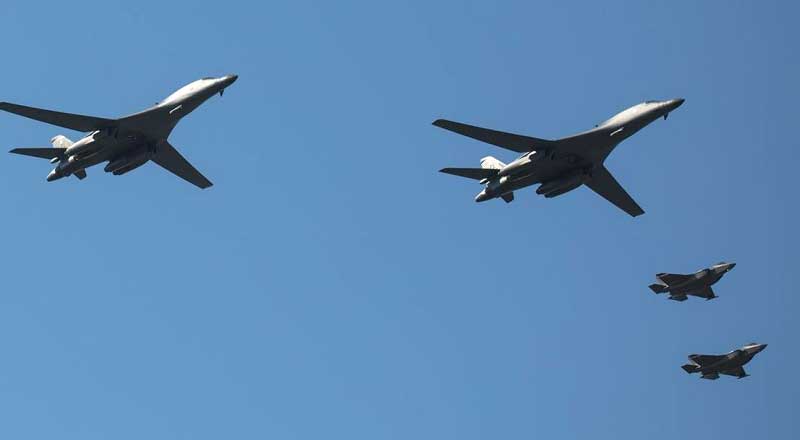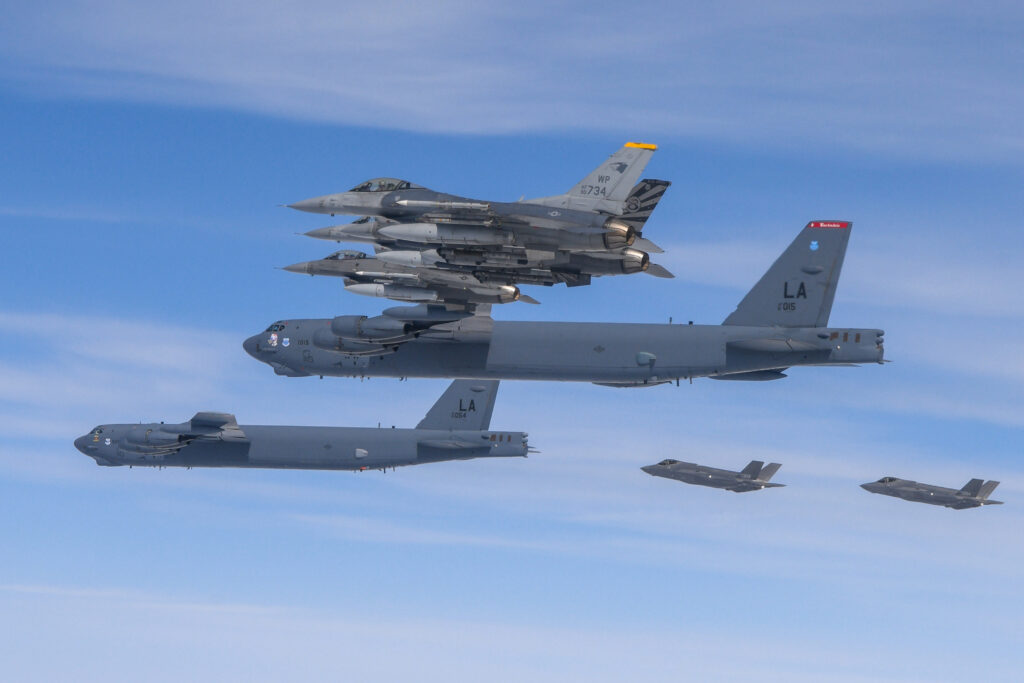Amid escalating tensions on the Korean Peninsula, the United States, South Korea, and Japan have joined forces in a series of joint military exercises. These maneuvers, involving B-1B bombers, fighter jets, and naval forces, are aimed at bolstering the allies’ preparedness against potential threats from North Korea.

Joint Military Exercises Feature US B-1B Bombers alongside South Korea and Japan (Photo: Global Defence Mart)
United Against North Korean Threats: U.S.-South Korea Joint Military Exercise
In a recent development published by South Korea News, in September 02, 2023, a resolute response to escalating threats from North Korea, the United States, South Korea, and Japan have come together to conduct joint military exercises. These exercises, featuring U.S. B-1B bombers, South Korean FA-50 jets, and U.S. Air Force F-16 fighters, are a display of unity and preparedness in the face of regional tensions.
North Korea has consistently criticized these annual drills as provocations, but the allies emphasize their defensive nature. This article delves into the recent joint military exercises and their significance in addressing the evolving security landscape in East Asia. The recent deployment of U.S. B-1B bombers alongside South Korean FA-50 jets and U.S. Air Force F-16 fighters underscores the commitment of the U.S.-South Korea alliance to bolster their defense capabilities.
These maneuvers are part of the Ulchi Freedom Shield exercises, a series of joint large-scale military drills aimed at enhancing readiness against North Korea’s nuclear and missile threats. It is worth noting that this marks the tenth such flight by American bombers this year, highlighting the ongoing dedication to regional stability.
READ ALSO: NFL Quarterback Drew Brees’ Former Teammate Draws Comparison Between Him And Current NFL Signal-Caller
Japan Joins US in Joint Military Exercise Amid North Korean Tensions
According to the report released by Reuters News, Japan has also entered the fray, with two U.S. Air Force B-1Bs participating in joint military exercises alongside 12 Japanese fighters, including four F-15 jets. These exercises underscore the trilateral commitment to regional security and preparedness. The timing of these drills, following North Korea’s unsuccessful satellite launch, sends a clear message of deterrence.
By displaying a united defense posture against North Korea’s recent provocations, the U.S., South Korea, and Japan aim to deter further acts of aggression and ensure the stability of the region.As these joint military exercises unfolded, North Korean leader Kim Jong Un accused the United States and its allies of heightening the risk of nuclear war. Kim’s comments were made in response to an August 18 summit at Camp David between the United States, South Korea, and Japan.
He described the waters off the Korean Peninsula as a “war hardware concentration spot” and expressed concerns about instability and the potential for nuclear conflict. In light of these tensions, the region remains on high alert, and diplomatic efforts will be crucial in preventing further escalation.
READ ALSO: Prosecutors Claim That A Chicago Man Held Firefighters At Knifepoint In A Gasoline-Soaked Home
























